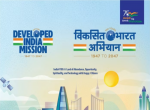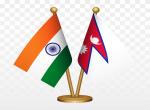India and Pakistan have just concluded their 115th Indus Commissioners` meeting at Lahore. The meeting involving technical discussions, was successful to the extent that the structured dialogue process within the provisions of the Indus Water Treaty (IWT) has been carried forward and the channel of communication on management of water flows and ancillary issues on the Indus River System, maintained.
Both the parties to the IWT deliberated on implementation of various hydro-electric projects including Pakal Dul (1000 MW) and Lower Kalnai (48 MW) on tributaries of River Chenab in Jammu & Kashmir. The Indus Commissioners agreed to undertake treaty mandated tours of both sides and strengthen the role of the Permanent Indus Waters Commission (PIWC). The latest PIWC meeting at Lahore and the agreement on site level inspection of projects, including those on the western rivers in Jammu & Kashmir, which are allocated to Pakistan but India can utilise for non-consumptive use under the IWT, should bode well for a better understanding between the two countries, at least at the technical level.
Though since 1960, under the IWT, India and Pakistan have conducted 70 and 48 tours respectively of their technical experts to different projects within its ambit, India agreeing to site visit by Pakistan`s Indus Commissioner and his team of the Pakal Dul and Lower Kalnai projects now has a specific significance. The above-mentioned two hydro-electric projects, to be executed by National Hydro Power Corporation and Jammu & Kashmir State Power Development Corporation, had been planned by India quite some time back. However, they were initiated by India not too far back in the backdrop of not-too-positive state of overall bilateral relations. Construction of Lower Kalnai had started in 2016 while the foundation stone of Pakal Dul was laid by India`s premier only in March this year. It is to be seen whether India`s recent efforts to step up execution of these projects in the interest of Jammu & Kashmir`s power supply needs, in the existing state of India-Pakistan bilateral relations, gets moderated as a consequence of the dialogue and technically-mandated tours within the purview of the IWT.
Pakistan`s objection to Pakal Dul and Lower Kalnai projects basically stem from apprehension of reduction in downstream flow of River Chenab, owing to the extent of storage by the dams in the tributaries concerned. Pakistan wants design changes in the projects to reduce their pondage (water storage capacity in run-off the river projects) and the temporary diversion for power generation in these run-of-the river projects. An inherent threat is also perceived by Pakistan on account of what they view as India`s resultant capacity to abruptly increase downstream flows by virtue of the level of pondage India is working on, and cause floods in the lower command area of River Chenab in its territory. Though it is unlikely that Pakistan will totally withdraw its objections to Pakal Dul and Lower Kalnai, the present dialogue process and the forthcoming tours could lead to lesser level of acrimony and contention between the two countries on management of the Indus River System. India`s gain will be to the extent that it is able to dissuade Pakistan from invoking other dispute resolution mechanisms within the IWT, such as adjudication by neutral experts which has affected another dispute over the Baglihar Project on the same River.
The IWT is one unique bilateral agreement-cum-institution which has endured for 58 years despite the vicissitudes of India-Pakistan relations. Dynamics of bilateral political relations have impinged from time to time, but have not had a long-term impact. For Pakistan, the bogey of the IWT working to India`s favour, and the gross outflow through the western rivers allocated to it (Indus, Jhelum and Chenab) declining over the recent years, can be a very emotive issue. Pakistani politicians from their country`s Punjab heartland and to an extent in Sindh, have tried periodically to work up public sentiments, which fortunately did not get exacerbated over time. This is because of the apprehension in Pakistan Government and political circles to the effect that India, in retaliation to their pressure tactics, could indeed taper off downstream flows through the western rivers by increasing upstream storage through the projects under construction. Such a development will not only reduce flows into Pakistan affecting their vital economic interests and mainly agriculture in the lower basin area, but would also enable India to regulate downstream discharge, which if done without sufficient notice to Pakistan, could result in inundation in the lower riparian areas in Punjab and Sindh.
The main issue germane to the future of the IWT, for obviating periodic acrimony on India`s construction of hydroelectric projects in the upper reaches of the western rivers and Pakistan`s grouse of its declining share of the Indus and its tributaries’ waters, is the need for adoption of a composite Indus Basin approach which has not been evident. This is not an intractable issue or unachievable. However, political will and understanding between the two countries is of essence in the matter. It may not be inappropriate to delink this issue from the so-called composite India-Pakistan dialogue or other critical bilateral issues like controlling terrorist intervention in Jammu & Kashmir, downscaling forces on the border, strategic understanding on nuclear and related issues, etc. The durability of the IWT and management of water shortages in the Indus River System flows in a mutually agreed manner is likely to be welcomed by the people in Pakistan`s and also our riparian states, provided the matter is propagated in a transparent manner and in a positive political perspective. In fact, lack of initiative on the part of India would play into the hands of the hawkish elements in the political sphere in our neighbouring country. There may be scope to work out a strategy for review and macro-management of the Indus Basin, without disturbing the present framework of the IWT, in the context of the new Imran Khan-led Tehrik-i-Insaf Government in Pakistan.
Climate change has affected the entire Indus catchment area. India`s role is onerous because it controls more than 3.21 lakh sq. km of the total drainage area, particularly in the upper reaches near the eco-sensitive Himalayan Mountain System. There is a case for an in-depth geomorphic analyses and hydrographic survey in these areas, developing basin scale flood risk maps, careful analyses of the impact of engineering structures on the river system as a whole, adoption of appropriate eco-forestry measures and move from river control, power generation, etc. to river management. Such a macro approach is expected to mitigate the impact of decline in precipitation, improve the carrying capacity of discharge and also prevent occasional floods like the ravaging disaster in the Sindh Plains in 2010.
India may consider proposing a framework of action which brings to bear expertise of technical experts of both the countries, and also international agencies and funding, to draw up an action plan which works as a countervailing measure to reverse the phenomena cited above. Such an initiative, will enable better understanding and a cooperative framework for successful continuance of the IWT, and is expected to have a reasonably positive fallout on bilateral relations or at the least, prevent the periodic accusations from some Pakistani circles on ‘India`s denial of Pakistan`s justified share of Indus waters’ (sic). However, this will require maturity on the part of the political elite of both the countries and a sincere effort to overcome the historical legacy bedeviling bilateral relations of the two countries.
The author is a retired IDAS officer, who has served in senior appointments in Government of India, including in Jammu & Kashmir. The paper is the author’s individual scholastic articulation)
Image Source: https://www.deccanherald.com/sites/dh/files/styles/article_detail/public/article_images/2016/10/07/574626.jpg?itok=J7jZDRpN











Post new comment